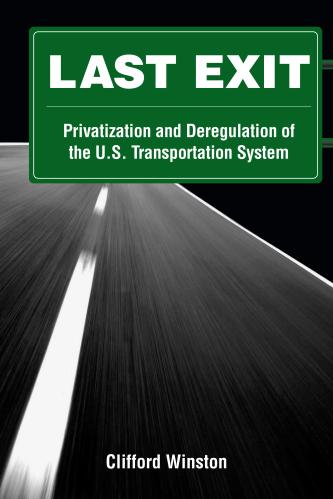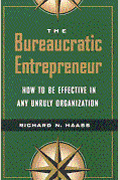Studies in this week’s Hutchins Roundup find that most US transportation infrastructure is not crumbling, laws restraining anti-competitive practices increase innovation, and more.
Want to receive the Hutchins Roundup as an email? Sign up here to get it in your inbox every Thursday.
Most US transportation infrastructure is not deteriorating
Using the federal government data on bridges, highways and the interstate highways, Matthew Turner and Geetika Nagpal from Brown and Gilles Duranton from the University of Pennsylvania find that, contrary to the widely publicized American Society of Civil Engineers report cards (which the authors say provides “little information about objective measures of physical condition”) most US transportation infrastructure is not crumbling. They also find that spending on transportation infrastructure has increased over the past three decades. Expenditures on the interstate highway network doubled between 1984 and 2008 and its condition improved modestly. The condition of bridges remained about the same, expenditures on them increased only 9%. Even though bus ridership was about constant, public transit buses are newer, on average, and 30% larger. In contrast, the mean age of subway cars was unchanged from 1992 to 2017 even though the number of riders doubled. The authors also argue that infrastructure capacity expansions do little to reduce congestion because they are typically offset by an increased volume of travel, accounting for public dissatisfaction with transportation infrastructure They conclude that investments in transportation infrastructure intended to reduce congestion or boost economic activity are risky at best.
Stringent competition laws increase innovation
The effect of competition on innovation is ambiguous: while competition provides incentives to firms to innovate so they can maintain or expand market share, it also can discourage innovation by reducing rents firms can capture from their innovations. Ross Levine from the University of California at Berkeley and coauthors examine the impact of competition laws on innovation by constructing a novel firm-level dataset on patenting activities of about 200,000 firms across 68 countries from 1991 through 2015. They find that more stringent laws that restrain anticompetitive behavior are associated with increases in the number of firms’ self-generated patents as well as the impact of those patents, as gauged by citations. The authors also show that competition-promoting laws are associated with significant increases in the number of patents firms acquire from other firms, although these laws tend to boost self-generated patents more than patents acquired from others.
How investor expectations changed in response to the pandemic shock
Using survey and transaction data from retail investors at Vanguard, a large asset manager, Stefano Giglio of Yale University and coauthors document how investors’ expectations about economic growth and equity returns change in response to a large shock. Their three surveys—conducted in February before the stock market collapse caused by COVID-19, in March after the drop in the market, and in April after the market’s rebound—find that, on average, investors’ expectations of stock returns and GDP growth over the next three years declined only slightly after the COVID-19 shock; long-term expectations of GDP growth and stock returns over the next 10 years remained stable. But investors believe that the probability of a disaster happening—stocks falling by at least 30% in the next year or annual real GDP growth of negative-3% over the next 3 years—spiked. They also find that respondents who were the most optimistic pre-crash revised their expectations downward the most and became more pessimistic about the market recovery in the short-term. These investors had a higher fraction of their portfolio in equities and sold more stocks to rebalance their portfolios. In contrast, investors who were pessimistic before COVID-19 left their portfolios unchanged during and after the crash, and about half actually revised their expectations upward.
Chart of the week: The racial income gap has not narrowed
Quote of the week:
“[T]he inflation concerns for now are to the downside. The risks are to the downside, not to the upside. We see prices moving down. That’s because, in a lot of parts of the economy, people are cutting prices. So you’ll see weak inflation data for a while. We’ve been dealing with disinflationary forces for a long time, actually, globally,” says Jerome Powell, Chair of the Federal Reserve Board of Governors.
“[O]ne thing that’s happened since 1975 is inflation was really the big economic issue [then.] Really since…Paul Volcker, one of the great public servants of our lives, what he did at the Fed and his colleagues did, inflation has really been under control. So the upside risk to inflation is not great.
I would say, you know, our balance sheet can’t go to infinity. I would say that I’m comfortable with where we are now and the path that we’re on and don’t see risks based on what we’re doing right now to inflation or to financial stability.”
The Brookings Institution is committed to quality, independence, and impact.
We are supported by a diverse array of funders. In line with our values and policies, each Brookings publication represents the sole views of its author(s).











Commentary
Hutchins Roundup: Transportation infrastructure, competition, and more
June 4, 2020